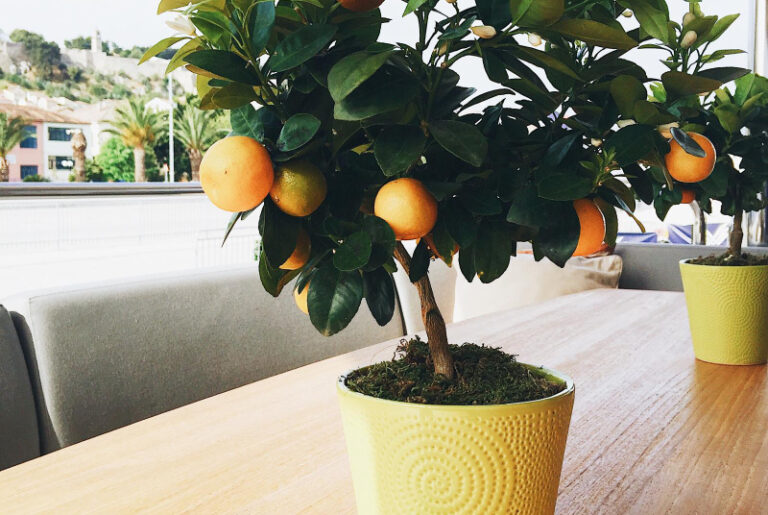
If you live in a city, you might think growing your own fruit is only for people with big backyards. But that’s not true! You can grow your own organic citrus fruits even in small spaces. Whether you have a balcony, a rooftop, or just a sunny window, it’s totally possible to grow healthy, fresh citrus like lemons, limes, or oranges right at home.
Here’s how you can do it step-by-step:
This post may contain affiliate links. If you choose to make a purchase from the links on this site, I may earn a small commission at no extra cost to you. I will only recommend products that I genuinely believe will add value to you. Your support is highly appreciated!
1. Choose the Right Citrus Variety

First, you need to pick a citrus tree that suits your space. Dwarf varieties are perfect for city living because they don’t take up much room. Consider these popular choices:
- Dwarf Citrus Trees: These compact varieties are perfect for limited space.
- Meyer Lemon: Known for its sweet and tangy flavor, it’s a popular choice for beginners.
- Calamondin: This small, ornamental tree produces tiny, sweet-tart fruits.
- Kumquat: These miniature citrus fruits are packed with flavor and can be eaten whole.
2. Pick the Best Pot

Once you’ve chosen your tree, the next step is finding the right pot. The pot should be big enough to hold the roots comfortably but not so large that the tree becomes overwhelmed. A pot that’s about 12 to 18 inches wide should work well. Make sure the pot has drainage holes to prevent water from sitting at the bottom, which can lead to root rot.
3. Use Good Quality Soil
Citrus trees like well-drained, slightly acidic soil. Look for a potting mix designed specifically for citrus or use a mix made for fruit trees. If you’re unsure, you can mix regular potting soil with sand or perlite to improve drainage. It’s important to keep the soil light and airy so the roots can grow well.
4. Find a Sunny Spot
Citrus trees need lots of sunlight, so place your pot in a sunny spot, ideally where it will get at least 8 hours of direct sunlight each day. If you don’t have a lot of natural sunlight indoors, consider using grow lights to supplement. It might cost a little extra, but it can make a big difference in the health of your tree.
5. Water Properly

Citrus trees don’t like to stay too wet or too dry. Water your tree when the top inch or two of soil feels dry. Be sure to water deeply so the moisture reaches the roots, but avoid letting the tree sit in water. If you’re growing your citrus indoors, check that the pot has good drainage to avoid over-watering.
6. Feed Your Tree

To keep your citrus tree healthy and productive, it needs regular feeding. Look for an organic compost manure. You can also buy organic fertilizer specifically made for citrus plants. Fertilize during the growing season (usually spring and summer), and be sure to follow the instructions on the fertilizer packaging to avoid overfeeding.
7. Prune and Care for Your Tree

Pruning helps your tree grow strong and healthy. Trim away any dead or damaged branches, and shape the tree to encourage airflow and light penetration. This is especially important if you’re growing your citrus indoors, where air circulation can be limited.
8. Protect from Pests
Even though you’re growing your tree organically, pests can still be a problem. Keep an eye out for aphids, spider mites, and scale insects. If you spot any, you can use natural methods like neem oil or insecticidal soap to treat them. Just be sure to apply these treatments in the early morning or late evening to avoid harming beneficial insects like bees.
9. Be Patient!
Citrus trees can take a few years to start producing fruit, so be patient. In the meantime, enjoy the beauty of the tree as it grows. Keep caring for it, and soon enough, you’ll be able to harvest your very own organic citrus fruits.
10. Harvesting: A Sweet Reward
When your citrus fruits are ready to harvest, they should be bright in color and slightly soft to the touch. Gently twist the fruit off the tree, and enjoy the fresh, tangy flavor in your cooking, drinks, or just as a snack.
Pro Tip: Citrus fruit ripens best when it’s left to hang on the tree until fully ripe. They won’t continue to ripen once picked, so be patient and savor the moment when you finally harvest them.
Final Thoughts
Growing your own organic citrus fruits in the city is not only possible but also rewarding. It takes a little effort, but the satisfaction of harvesting your own fruit makes it all worth it. Plus, you’ll have fresh, pesticide-free citrus whenever you need it. So, whether you’re working with a tiny apartment balcony or a rooftop garden, start small and enjoy the process of growing your own citrus at home.
